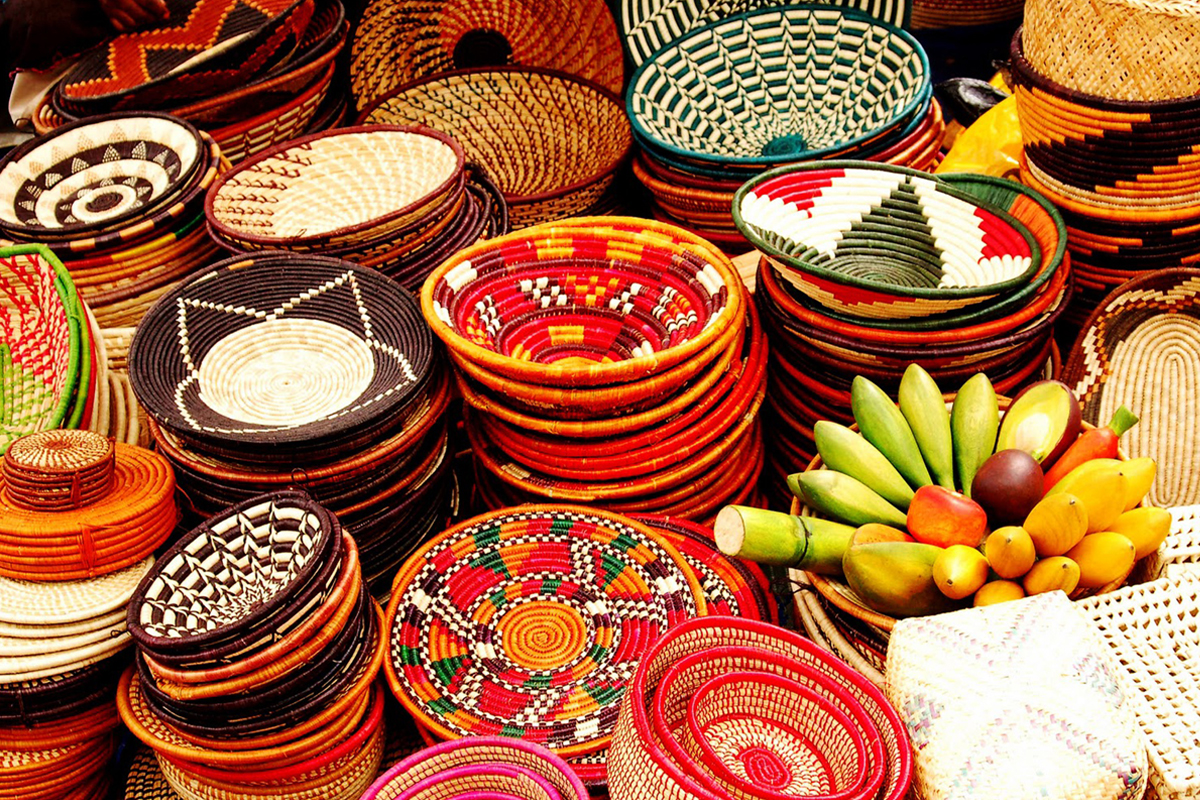Have you ever wondered about the vibrant heritage embedded in every piece of Tanzanian craft? From the intricately woven fabrics of the Maasai to the delicate beadwork of the Pare people, each artifact reflects centuries of culture and tradition. The country’s artisans are not merely creators but storytellers, weaving historical narratives into each craft.
The origins of Tanzanian crafts can be traced back to ancient tribes and their sacred customs. For instance, the Tinga Tinga paintings started with Edward Said Tingatinga in the late 1960s and have since become a significant cultural export. Today, these traditional practices are not just artistic endeavors but are vital to the local economy, with crafts accounting for up to 10% of artisanal exports.

Discover the Traditional Crafts of Tanzania
Walking through the vibrant markets of Tanzania, you’ll be greeted by a variety of traditional crafts, each with its unique story. The Maasai beadwork, known for its beautiful patterns and symbolism, is a perfect example. Each color in the beadwork carries a distinct meaning, reflecting different aspects of Maasai culture. Moreover, the colorful kanga fabrics are an eye-catching staple worn by women across the country. These vibrant pieces are often adorned with Swahili proverbs, blending fashion with wisdom.
The origins of these crafts date back centuries, deeply rooted in tribal traditions. Through generations, Tanzanian artisans have passed down their skills, preserving the richness of their heritage. According to this post, traditional crafts like the Tinga Tinga paintings have become popular worldwide. These paintings, characterized by their bright colors and lively themes, originated from a small workshop in Dar es Salaam. Today, you’ll find Tinga Tinga art celebrated in galleries around the globe.
Wood carving is another prominent craft, especially among the Makonde people. They are renowned for their intricate carvings that depict human figures, animals, and mythical scenes. Often carved from ebony or mahogany, these pieces are not just decorations but storytelling mediums. This unique form of expression draws tourists and collectors from all over the world. The Makonde carvings hold significant cultural value, serving as a connection to spiritual beliefs and ancestral tales.
In modern times, these traditional crafts have also spurred economic growth in local communities. Artisans create crafts for both local markets and international export. According to the article here, the Maasai cultural heritage is highlighted at global events, bringing recognition and financial benefits to these artisans. The crafts not only act as symbols of Tanzania’s rich history but also play a vital role in sustaining its economy. This blend of tradition and modernity showcases Tanzania’s ability to honor its heritage while adapting to contemporary needs.
The Rich History of Tanzanian Crafts
Traditional crafts in Tanzania are a vital link to the country’s rich past. Many of these crafts have origins dating back centuries, with skills handed down through generations. The Maasai beadwork, for instance, is more than just beautiful jewelry; it’s a symbol of identity and status. Each bead color and pattern represents different aspects of Maasai life, such as age, marital status, and social position. This heritage makes each piece uniquely significant in the Maasai culture.
Another ancient craft is the making of kanga cloth, a brightly colored fabric worn mainly by women. These fabrics have been part of Swahili culture since the 19th century and are often decorated with proverbs and sayings in Swahili. Kanga cloth serves not only as a fashion item but also as a communication tool within the community. Each pattern and phrase tells a story or shares wisdom, linking people to their past. The legacy behind kanga cloth reflects the creativity and thoughtfulness of its makers.
Wood carving is another craft deeply rooted in Tanzanian history, particularly among the Makonde people. This art form has been practiced for centuries, producing intricate sculptures that often depict human figures and spiritual themes. The carvings are not just decorative; they serve as important cultural and spiritual symbols. Some pieces are believed to house ancestral spirits or convey important life lessons. This adds a layer of depth to the already impressive craftsmanship displayed in every piece.
Modern Tanzanian crafts have also evolved while retaining their historical significance. Artisans combine traditional techniques with contemporary designs to appeal to both local and international markets. According to the article, this blend of old and new techniques has allowed Tanzanian crafts to gain global recognition. The preservation and adaptation of these crafts underscore their enduring relevance in today’s world. This dynamic evolution ensures that these traditional practices continue to thrive, enriching both local culture and the economy.
The Influence of Tanzanian Crafts on Local Culture and Economy
Tanzanian crafts play a crucial role in shaping local culture and sustaining the economy. These traditional arts are not just items for sale; they are expressions of cultural identity and heritage. For many communities, creating crafts is a way to preserve stories and traditions. By learning and practicing these skills, artisans keep their history alive. This cultural preservation is vital for maintaining a sense of identity and continuity.
Economically, the craft industry provides significant income for many Tanzanians. By selling their handmade goods, artisans can support their families and invest in their communities. For example, the Maasai beadwork and kanga fabrics attract both locals and tourists, generating considerable revenue. Markets, workshops, and boutiques selling these items contribute to local economies. This economic activity provides stability and growth opportunities in regions that may otherwise struggle financially.
The government and various NGOs also recognize the potential of traditional crafts to boost the economy. They often support initiatives that train artisans and promote their products both domestically and internationally. These programs help improve the quality and marketability of the crafts. By enhancing skills and providing business education, these initiatives enable artisans to tap into broader markets. This support helps sustain and grow the craft industry.
Moreover, the fusion of traditional and modern designs has broadened the appeal of Tanzanian crafts. Contemporary adaptations make these items attractive to a global audience, increasing demand and boosting exports. According to the post, this growing interest drives more tourists to explore and purchase authentic Tanzanian crafts. This dynamic not only enhances the cultural appreciation but also brings economic benefits. These crafts and their makers enrich Tanzania’s cultural landscape and contribute to its economic resilience.
Key Takeaways
- Tanzanian crafts preserve and celebrate cultural identity through each unique piece.
- Artisans pass down their skills through generations, keeping history alive.
- The craft industry significantly supports local economies by generating income.
- Government and NGOs support initiatives to train artisans and enhance marketability.
- Fusion of traditional and modern designs appeals to a global audience, boosting exports.
Conclusion
Tanzanian crafts are more than mere artifacts; they are living expressions of the nation’s rich heritage. These crafts not only preserve cultural traditions but also provide economic opportunities for local communities. The fusion of traditional techniques with modern designs ensures their relevance in today’s global market.
The support from government and NGOs has furthered the reach of these crafts, allowing artisans to thrive. By celebrating and investing in Tanzanian crafts, we help sustain a vibrant cultural legacy. This robust tradition continues to enrich both local and global cultures.

